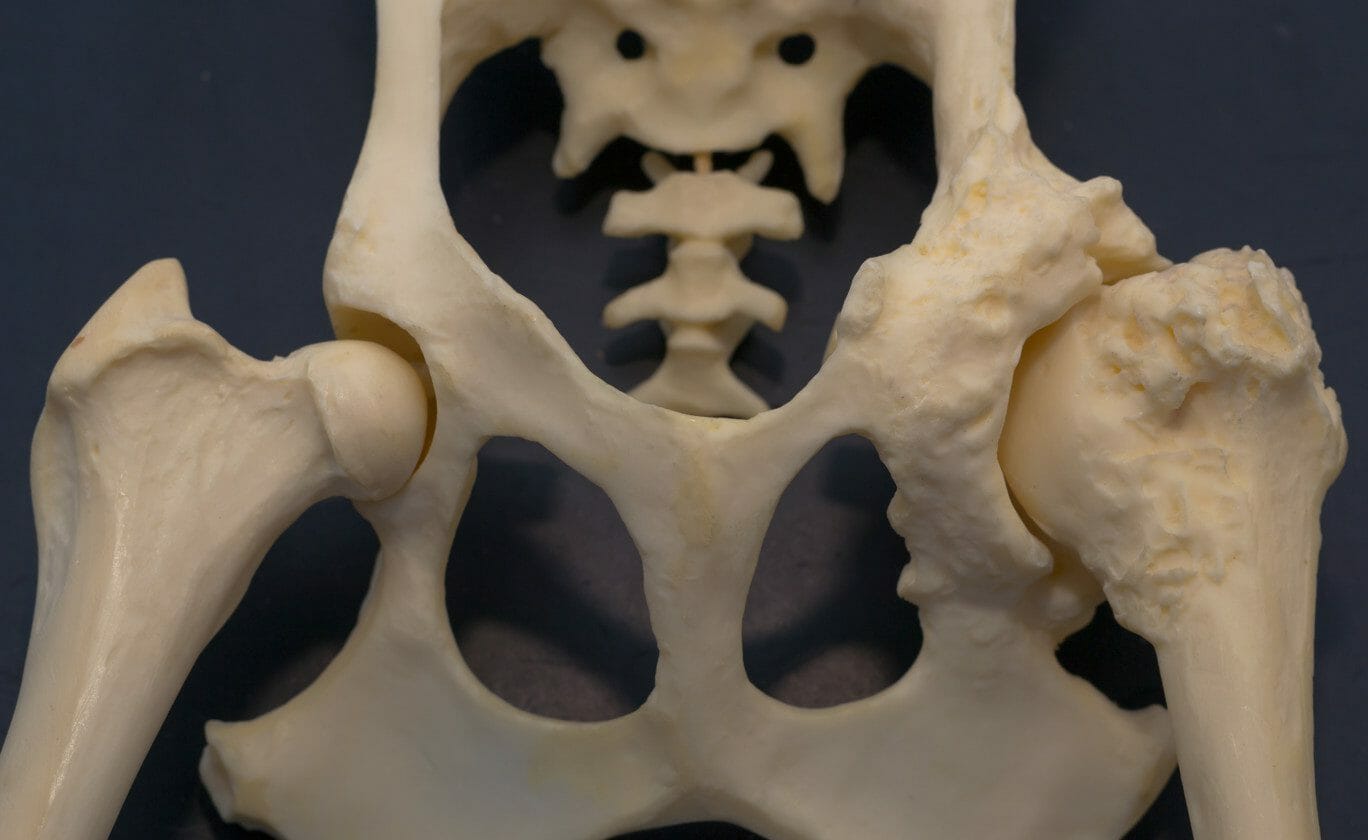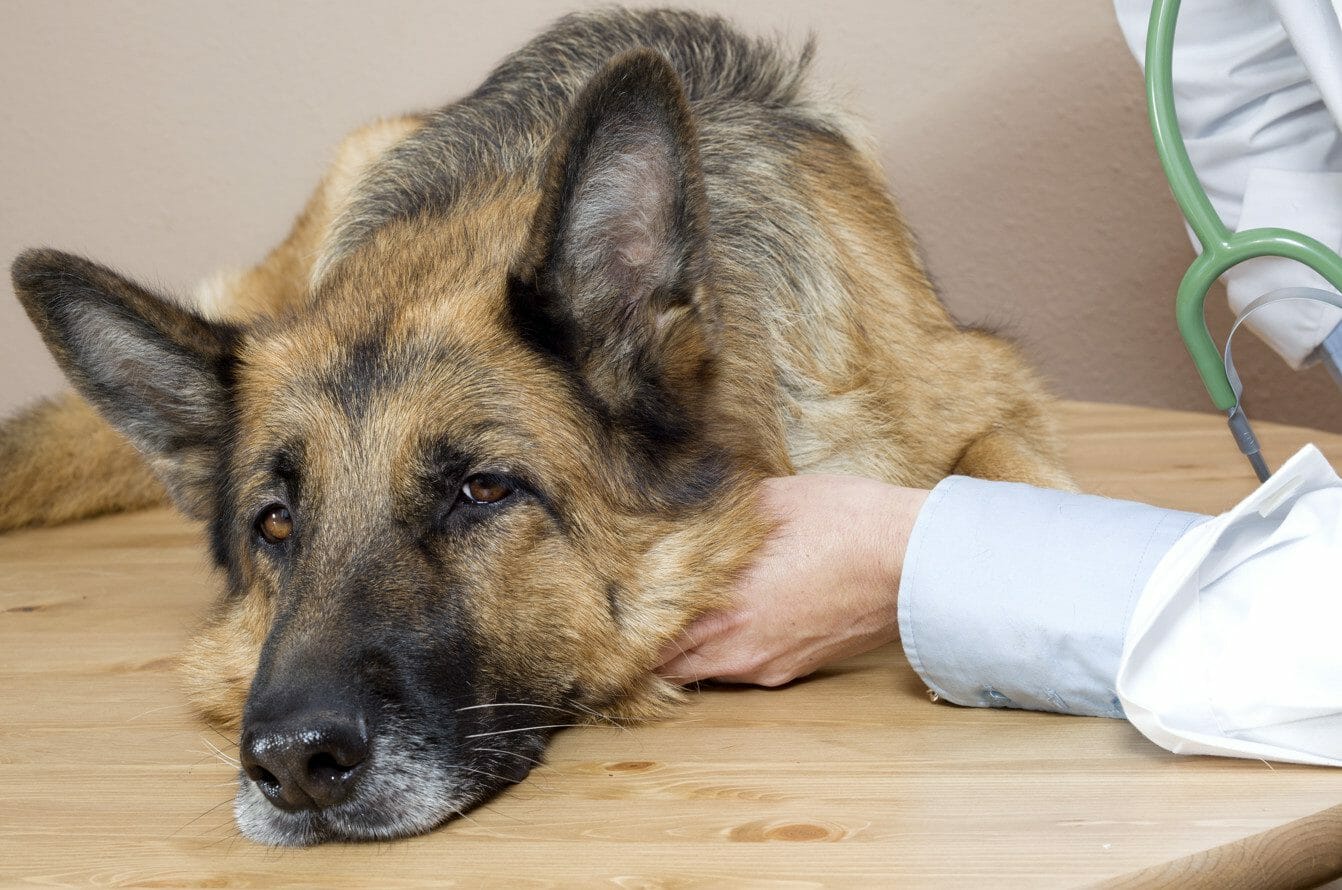Dog Arthritis Symptoms
Arthritis in dogs is an inflammatory disease that affects the condition of the joints. It occurs when the cartilage between a dog’s joints wears down and becomes rough. When this occurs, the bones will grind against each other, causing joints to swell, stiffen, and become painful.
The main symptom is a restriction in the dog’s mobility. The condition will make it uncomfortable for the dog to walk. Although arthritis in older dogs is more commonplace, a puppy or younger dog could develop the disease due to injury or genetics.

The signs of arthritis in dogs that owners should be aware of include:
- Limping – limping before and after walks; the limp may be less noticeable if it affects more than one joint
- Chewing or licking painful joints
- Evidence of pain when the dog is stood or walking
- Difficulty finding a comfortable resting spot
- Tiredness or unwillingness to walk
- Stiffness when the dog is moving
- Changes in mood such as grumpiness or irritability
- Quickly slowing down
When a dog becomes less active, muscle atrophy will occur. This may lead to one leg appearing thinner than another. If a dog is showing any of the symptoms of arthritis, it is important to take them for proper diagnosis from a veterinarian.

What Causes Arthritis in Dogs?
There are several possible causes of this condition, including:
- Age
- Breed
- Diet quality
- Exercise
- Injuries
Common causes include:
- Injuries to a joint, such as a torn ligament of an infected wound
- Age
- Being overweight or obese
Which Breeds Are Most Prone to Develop Arthritis?
Although the condition can occur in any dog, certain breeds are more prone to developing it than others, particularly those with a predisposition to conditions such as elbow dysplasia and hip dysplasia. Breeds with a higher prevalence of the condition include:
- German Shepherds
- Springer Spaniels
- Labradors
- Bernese Mountain Dogs
- Golden Retrievers
- Rottweilers

Arthritis in Dogs Hips
More prominent in large or giant breeds, hip dysplasia occurs when the dog’s ball and socket hip joint does not develop as it should. The bones of an ill-fitting joint will rub together and wear down, which can lead to deterioration over time. In many cases, dogs that have hip dysplasia will go on to develop the condition.
Elbow Dysplasia and Arthritis
Elbow dysplasia is a common hereditary condition that leads to pain and swelling that predominantly affects medium and large breeds. Symptoms will start when the dog is still a puppy if a joint doesn’t form correctly. As the dog’s weight starts to put pressure on the elbow joint, it can damage the joint.
Although the condition can be managed with correct exercise and diet or addressed through surgery, dogs that suffer from elbow dysplasia are prone to developing arthritis in the affected joint.
At What Age Do Dogs Get Arthritis?
Dogs from around the age of a year old can develop the condition. However, it is found most often in senior dogs. This means any dog from around the age of eight years old can develop the condition.

How to Tell If a Dog Has Arthritis
The best way to find out whether a dog has arthritis is to get the canine assessed by a veterinarian. Although there is no test that specifically indicates the presence of the condition, a veterinarian will carry out a full physical examination of the dog to assess pain and stiffness surrounding the joints.
A veterinarian may conduct further tests (including taking X-rays and blood samples) to identify the signs of any other conditions that may be affecting the dog’s joints. An X-ray will indicate severe arthritis in dogs. However, earlier stages of the condition will not be apparent. Even if nothing is visible in an X-ray, the dog should still be treated for it to minimize long-term damage.
What Is the Best Treatment for Arthritis in Dogs?
Once diagnosed, the veterinarian will provide advice on how to treat arthritis in dogs. Treatment may consist of using supplements and arthritis medication for dogs, an improved diet, and exercise.
Dog arthritis medicine is used to help manage pain and reduce inflammation. Commonly prescribed arthritis meds for dogs include:
- Non-steroidal anti-inflammatory drugs (NSAIDs)
- Corticosteroids
- Gabapentin
- Injections of Cartrophen
Tramadol for dogs arthritis may occasionally be prescribed. Several NSAIDs (such as Carprofen or Metacam) are suitable over-the-counter medicines for dogs. Please note that human anti-inflammatories and pain medication may be toxic to dogs and should not be given.
Dog arthritis supplements include omega 3 fatty acids, which are used to reduce inflammation. One of the best sources of omega 3 is fish oil. However, it is important to strictly follow the recommendations of a veterinarian about the dosage. Dogs require a higher dose than humans. However, this can lead to weight gain if not properly managed.
Glucosamine and chondroitin sulfate can also be used to lubricate the dog’s joints and restore cartilage. Alternatively, a veterinarian may also recommend:
- Laser treatment for arthritis in dogs
- Dog massage for arthritis
- Acupuncture
- Hydrotherapy
- Joint fusion surgery (arthrodesis)

How to Help a Dog with Arthritis at Home
Knowing how to treat arthritis in dogs is key to managing their symptoms. Making the home environment comfortable for an arthritic dog will make life easier for them. Arthritis relief for dogs requires owners to make the following adjustments:
- Providing ramps to get up and down from cars and furniture
- Ensuring a warm, comfortable, easily accessible dog bed
- Raising the dog’s water and food bowl to prevent bending
- Ensuring there are no slippery surfaces that the dog may struggle to walk on
- Providing heat pads to keep the joint warm
Choosing appropriate dog food for arthritis and maintaining a daily exercise routine will ensure obesity does not become a problem. When a dog is overweight, this can put additional pressure on the joints, which rapidly increases deterioration.
How Long Can a Dog Live with Arthritis?
This is a lifelong condition that will gradually worsen over time. If a dog is well looked after and the condition is managed, there is no reason why a dog shouldn’t live to the maximum age for its breed.



